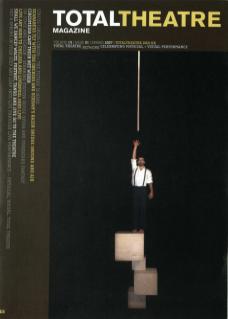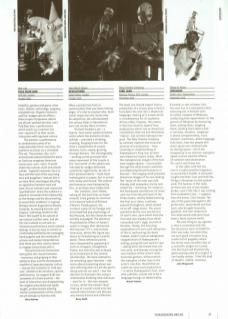Godzillas, geishas and game-show hosts. Robots, technology, puppetry, and green tea. Origami/monsters and low-budget special effects: these tropes of Japanese culture are all jam-packed into doo-cot’s Fold Your Own, a performance which enacts as a reaction (an over-reaction?) to their recent interaction with Japanese culture.
The premise: a performance as randomised scenes of an undecipherable filmic narrative, the audience as extras on a simulated film set. The promise: doo-cot’s promotional material billed the piece as (and cue imaginary American movie voice-over-man): ‘A world where two cultures clash and islands collide. England’s dreamers face to face with the land of the surprising sons and daughters.’ And yet this is no mere filmic monologue detailing an opposition between east and west, but an intimate and interactive ‘psychodrama’ where the audience is asked to reconsider their relationship to the foreign and the disconcerting, to enact their ‘problems’ in a group therapy session disguised as theatre. Certainly, by wearing kimonos and slippers, and being seated on the floor I felt myself to be outside of my cultural comfort zone, and yet the risk involved in just such an interactive performance event seemed lacking: it was too easy to remain so comfortably baffled by the rampaging hand puppets and the multitude of actions and media interpretations that there was little need or desire to engage interactively with it.
The performances themselves were great, the visuals fantastic – humorous and gripping in their ability to draw out the stereotypical mayhem of Japanese popular culture – and yet the invitation to ‘fold your own’, whether it be narrative, opinion, performance, (or origami bird) was somewhat of a false promise – the level of interaction was disappointing, the origami prescribed and rigidly taught, predominately allowing merely a perpetuation of the clichés we are already so familiar with.

